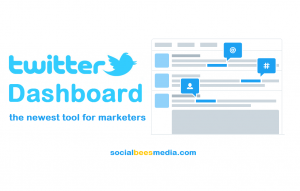— February 24, 2019
Work in the United States is not designed to be creative. It’s designed to be repetitive, efficient, and reliable. Businesses, no matter what sector, have been modeled on the principles of the industrial revolution. Work rhythms have been set to clocks instead of sun, season, or sentiment. We live, die, and stress out to deadlines we ourselves impose.
Offices and factories imitate Ford’s famous assembly line, so we can easily complete repetitive tasks, whether we’re answering customer calls, serving fries, or manufacturing Ford automobiles. And even though robots are taking over (and/or saving us from) our robotic tasks, many of us still work in environments designed for repetition and efficiency instead of creativity.
So it’s no wonder creativity has become such a popular business topic. We sorely lack it. Our work is designed to follow the path most taken and the few people who do stray off path are revered as geniuses. But what if you could design creativity back into work so instead of finding geniuses far and few between you create a company full of them?
Design your space for serendipity
We don’t get new ideas from the routine. Randomness, juxtaposition, and serendipity fuel our connections to creativity. But when your work is designed to make your tasks repetitive and efficient, how can you change it up to find your spark?
If you’re Pixar, you designed the entire office building to bring chance into work. They did this by placing bathrooms and cafeterias in central areas. Thus, on the way back from the bathroom or in the cafeteria lunch line, you would be more likely to have a conversation with someone from a different department and spark a new idea.
Sadly, not all of us have enough money to design our own buildings. But you can change where people sit in the building you have now. Some workplaces have ditched the office spaces and provide common areas to collaborate and private workspaces to concentrate.
Other companies don’t segregate people into their work specialties (i.e., all marketing people with marketing people, or all sales with sales) and instead mix them together, to increase innovation. At one company, they use small meeting rooms designed like kivas, with curved walls, no tables, and whiteboards to break down silos and encourage people to show and not tell.
Kill the kingdom
No one talks about how creative the military is. But every company in the U.S. has been inspired by the military top-down model of leadership. Ideas (and orders) come from the top and the responsibility of the bottom is to execute, not innovate. No one is ever fired for following orders. So how can you get more ideas when people are afraid to get out of line. Simple: cut out the line and ditch some of your furniture.
Gore, famous for creating GoreTex, got rid of almost all their job titles. Instead of a kingdom with lots of titles, they have a democracy. Employees are equal and expected to come up with their own ideas and projects.
At Pixar, they discourage hierarchy through furniture. In meeting rooms, they use round tables instead of rectangular ones. Pixar found when they used rectangular tables, people would all face the leader, spending their time trying to please the king or queen. But when they sat in a circle, people tended to focus on the best ideas.
Hire people who aren’t like you
We say “great minds think alike.” However, thinking the same is not the same as thinking creatively. Creative duos like Paul McCartney and John Lennon of the Beatles, Steve Wozniak and Steve Jobs of Apple, or Tina Fey and Amy Poehler of SNL didn’t think alike. It was their differences that brought greatness to their endeavors. So stop hiring people like yourself.
In his book the Innovation Code, innovation thought leader Jeff DeGraff showed successful companies hire people with a diversity of mindsets. People who think differently provide constructive conflict, which generates new ideas and solutions.
Omar Johnson, who famously brought Beats headphones to worldwide popularity as the Chief Marketing Officer, believed in hiring diverse people to stimulate ideas. His marketing team was made of the same kind of random sample you would find on any city street: men, women, gay, straight, tattooed or not. His approach led to some of his famous advertising campaigns like “Straight Outtta Somewhere.”
In the end, work doesn’t have to be a military drill—dull, repetitive, and with a top-down hierarchy. Instead, you can design your work to bring out your best ideas through room design, focusing on ideas, and getting different voices into the room. Take a lesson from the Beatles and you may just achieve a few hits of your own.
Business & Finance Articles on Business 2 Community
(72)








